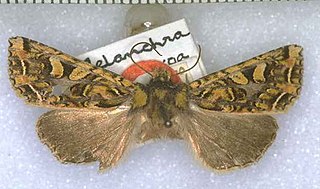
Meterana tetrachroa is a species of moth of the family Noctuidae. This species is endemic to New Zealand. It is classified as "Data Deficient" by the Department of Conservation.
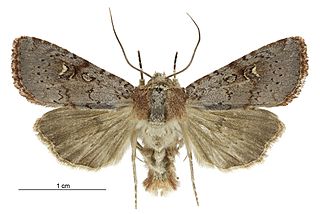
Ichneutica hartii is a moth of the family Noctuidae. This species is endemic to New Zealand and can be found only in the North Island. I. hartii is similar in appearance to Ichneutica agrorastis but can be distinguished as it tends to be smaller in size and have a more purplish shade to its fore wings. I. hartii tends to be found inhabiting lowland native forest or forests found in the hilly ranges of the North Island. It is attracted to light and the adults of this moth are on the wing between January and March. Much of its life history is currently unknown as are the larvae host species.
Orocrambus punctellus is a species of moth in the family Crambidae. It is endemic to New Zealand. It is classified as "Data Deficient" by the Department of Conservation.
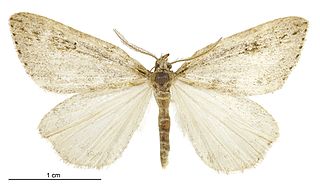
Pseudocoremia cineracia is a species of moth in the family Geometridae. It is endemic to New Zealand. It is classified as Nationally Vulnerable by the Department of Conservation.

Asaphodes obarata is a moth in the family Geometridae. It is endemic to New Zealand and has been collected in both the North and South Islands. It seems to inhabit the margins of native forest and also frequents plains with an affinity for gorse hedges. The host plants of the larvae of this species are unknown. The adults are on the wing in December and January. It is classified as critically endangered by the Department of Conservation. There has been a contraction of range of A. obarata with it now being regarded as locally extinct in both Dunedin and Invercargill.
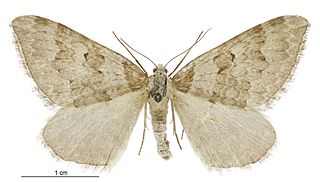
Xanthorhoe frigida is a species of moth in the family Geometridae. It is endemic to New Zealand. The larvae of this species feeds on species in the plant genus Pachycladon including the threatened Pachycladon wallii'. The adults of this species are on the wing from December to February. This moth is classified as nationally vulnerable by the Department of Conservation.

Meterana exquisita is a species of moth in the family Noctuidae. This species is endemic to New Zealand. It is classified as "At Risk, Relict'" by the Department of Conservation.
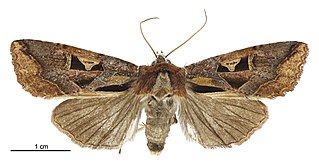
Meterana grandiosa is a species of moth in the family Noctuidae. This species is endemic to New Zealand. It is classified as "At Risk, Relict'" by the Department of Conservation.

Asaphodes cinnabari is a species of moth in the family Geometridae. This species is endemic to New Zealand and can be found in Otago and Southland where it lives in alpine swampy habitat. Adults of this species are on the wing in November.

Ichneutica panda is a species of moth in the family Noctuidae. It is endemic to New Zealand and only found in central and southern parts of the South Island. The species has not been collected in Canterbury since the late 1950s and has not been seen at The Wilderness scientific reserve since 1941. This species is similar in appearance to Ichneutica falsidica however I. panda lack or have indistinct black dashes on their edge of their hindwings. I. panda inhabit shrubland from alpine zones down to river terraces and adults are on the wing between December and February. The life history of this species is unknown as is the host species of the larvae.

Asaphodes cosmodora is a species of moth in the family Geometridae. This species is endemic to New Zealand and has been observed in the South Island. The adults of this species are on the wing in January and February.

Asaphodes dionysias is a species of moth in the family Geometridae. This species is endemic to New Zealand and is only known from mountainous areas in Central Otago. It lives in open grassy mountainous habitat at altitudes up to 1750 m. It is also known to live in wetland habitat. The larvae of this species feed on native herbs. The adults of this species are on the wing in January and February. The adult female of the species has reduced wing size in comparison to the male.
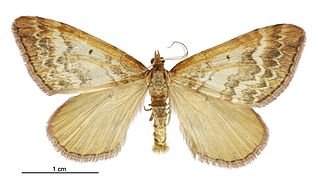
Asaphodes helias is a species of moth in the family Geometridae. It is endemic to New Zealand. It has been found in the middle and southern parts of the South Island. This species frequents tussock and scrubby habitat. The host plants of the larvae of this species include Cardamine and Ranunculus species. They have also been witnessed feeding on exotic buttercup species in the genus Bellis. Adults are on the wing in January and February.
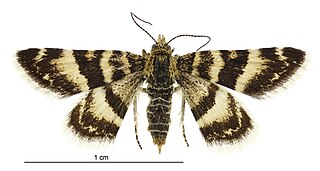
Notoreas ortholeuca is a species of moth in the family Geometridae. It is endemic to New Zealand.

Ichneutica cana is a moth of the family Noctuidae. It is endemic to New Zealand.
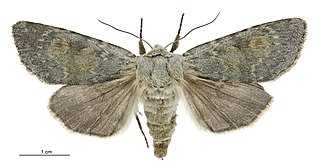
Ichneutica nobilia is a moth of the family Noctuidae. This species is endemic to New Zealand and can be found in the South Island, although not in the Nelson, Dunedin or Southland regions. This species prefers rocky habitats in alpine zones and the blueish-grey sheen on the species' forewings help camouflage it. Adults of I. nobilia are on the wing from December to February and are attracted to light. The life history of this species is unknown as are the host species of its larvae.
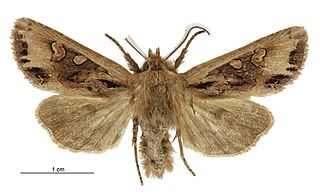
Ichneutica fenwicki is a moth of the family Noctuidae. This species is endemic to New Zealand and is found in the southern parts of the South Island and on Stewart Island. It is a distinctively coloured moth that is unlikely to be confused with closely related species. It is a spring flying moth being on the wing from September to November. The life history and host species of the larvae of I. fenwicki are unknown.
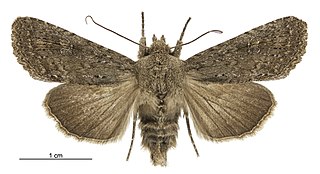
Physetica homoscia is a species of moth of the family Noctuidae. It is endemic to New Zealand and is found throughout New Zealand including in the Auckland Islands. This species inhabits places where its host plants are common and this includes costal dune habitat. It lives at a wide range of altitudes from sea-level up to at least 1750 m. The larvae of P. homoscia feed on Ozothamnus leptophyllus and Ozothamnus vauvilliersii. They are very active and drop to the ground when disturbed. Larvae are parasitised by a species of fly. This species pupates in the soil and the pupa life stage lasts for approximately 6 weeks. The adult moths are on the wing from September to June and are attracted to light. The adults of P. homoscia might possibly be confused with Ichneutica moderata however this latter species lacks the small white dots on the forewing veins of P. homoscia. Adults might also be confused with P. temperata but P. homoscia is significantly larger in size.

Meterana alcyone is a species of moth in the family Noctuidae, the owlet moths. This species is endemic to New Zealand and is found in the North and South Islands. The larvae of this species feed on the leaves of Muehlenbeckia complexa and Corynocarpus laevigatus. Adults are on the wing every month of the year except January. They are attracted to light and have also been recorded as bycatch in the New Zealand National Fruit Fly Surveillance fly traps.

Meterana asterope is a species of moth in the family Noctuidae. This species is endemic to New Zealand and is found in the North and South Islands. It inhabits both native forest and open habitat and adults emerge during the New Zealand summer. Adults are on the wing in December and January. This species is attracted to light and has also been collected via sugar traps.





















